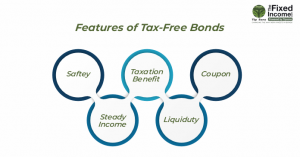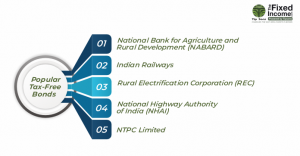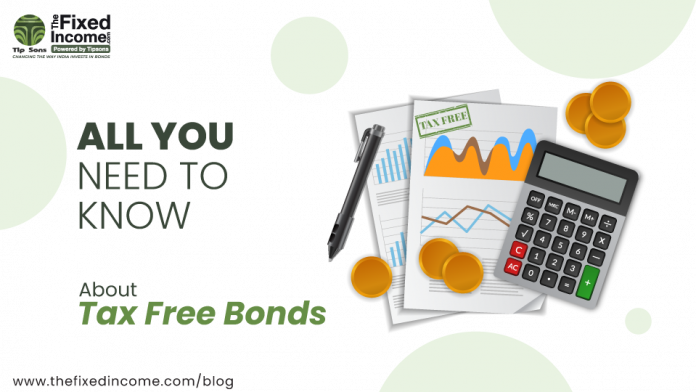Looking for an easier and more reliable way to minimize your tax burden? Tax-free bonds are a great way to maximize your earnings while minimizing your tax burden. Generally, Government Bonds are fixed-income securities issued and backed by the government of India but the interest on the same is taxable. Tax-free bonds are issued by government entities, and they are essentially loans you make to government entities in exchange for a fixed interest rate. These bonds are attractive because they offer a steady income with no taxes on the interest earned. Like Government Bonds, Tax-free bonds are also risk-free investment options with almost negligible credit risk. However, before you jump into investing in tax-free bonds, it is essential to understand the fundamentals of this fixed-income security to make an informed decision.
If you’re new to investing in fixed-income securities, this guide will explain everything from how tax-free bonds work, to why they might be right for your portfolio.
Overview of Tax-Free Bonds
Tax-free bonds are fixed-income securities issued by public undertakings that offer investors tax-free interest income. One of the major advantages is that the interest on tax-free bonds is completely tax-exempt as per section 10 of the Income Tax Act, 1961. Tax-Free bonds are usually issued for longer maturity of 10 years or more. Government entities like PFC, etc. issue tax-free bonds to raise money for various projects like infrastructure and housing. The rate of interest on tax-free bonds is determined on the basis of factors like the prevailing Government Bond interest rate, the tenure for which bonds are issued, the credit rating of the issuer, etc.
How do Tax-Free Bonds Work?
Tax-free bonds are bonds that are issued and backed by the government, therefore the chances of default in interest payment and principal repayment are quite minuscule. Investing in tax-Free bonds is thus considered the safest investment option, in addition to government bonds which are issued by the Government of India, for risk-averse investors who wish to earn tax-free interest income. The interest payments received on tax-free bonds are not chargeable to tax.
For investors, tax-free bonds are among the most attractive fixed-income securities because they earn a fixed interest without incurring any tax obligation. The principal amount is also repaid on maturity, just like other bonds. Therefore, when you invest in a tax-free bond, you know exactly how much return will be generated and when you will receive the same.
Features of Tax-Free Bonds


Safety: Tax-free bonds are appealing to investors because they offer a tax-free steady income stream with no risk of losing money as bonds are backed by government security.
Steady Income: The tax-free bonds interest rate is predetermined so when you invest, you know exactly how much interest will be generated. Additionally, this tax-free yield is earned over and above the principal, which will be repaid upon maturity.
Taxation Benefit: These bonds are suitable for high-net-worth investors as the interest earned on them is Tax-free. In other words, if you fall in the maximum tax bracket, you stand to gain more. Furthermore, these bonds are ideal for risk-averse investors who desire fixed income on securities.
Liquidity: Investors should be aware of the fact that tax-free bonds cannot be liquidated as quickly as other asset classes. But since tax-free bonds are listed on BSE (Bombay Stock Exchange) and NSE (National Stock Exchange), one can buy tax-free bonds from stock exchanges.
Coupon: The coupon rate for tax-free bonds generally ranges from 5.50% to 7.50%, which is quite attractive considering the interest on these bonds is exempt from tax.
However, tax-free bonds also have some drawbacks that investors must be aware of. The first drawback is that, although the interest payments are not taxed as earned, the principal amount is not eligible for tax deduction under section 80C.
In other words, even though you are not taxed on the interest payments, you cannot deduct any associated interest expenses from your taxable income. This means that tax-free bonds offer tax exemption for the interest income earned and not for the principal amount invested.
Taxability: The lender will receive a fixed coupon payment each year, with no taxes paid on it. It is pertinent to note that neither Tax is deducted at source (TDS) nor the income is chargeable to tax on receipt.
Although the interest paid by tax-free bonds is exempt from income tax, it is important to keep in mind that selling tax-free bonds in the secondary market attracts capital gains tax. If the investor sells tax-free bonds in the secondary market within 12 months from the date of purchase, the tax is to be paid as per your slab. If you sell after 12 months, long-term capital gain tax is levied and a flat rate of 10 percent is charged without any indexation benefits.
Popular Tax-Free Bonds


Many public sector organizations issue bonds that are tax-free. Some of the most well-known ones are the National Bank for Agriculture and Rural Development (NABARD), Indian Railways, Rural Electrification Corporation (REC), National Highway Authority of India (NHAI), and NTPC Limited. Other examples are Housing and Urban Development Corporation, Indian Renewable Energy Development Agency, and PFC (Power Finance Corporation) tax-free bonds.
How to invest in Tax-Free Bonds?
The government entities at the time of issue, open a subscription window for investors to buy tax-free bonds. You can easily buy tax-free bonds via online mode through a Demat account. It is important to note, however, that these bonds are only available for a limited time. After the issue, tax-free bonds are listed on BSE and NSE and can be traded in the secondary market just like normal bonds. But, remember to analyze the terms and risks involved before investing in tax-free bonds.
Conclusion
Tax-free bonds are a great way to save money, but they can be challenging to understand. They’re designed to give you access to government-backed debt without paying taxes on the interest income. The main benefit of investing in tax-free bonds is that they allow investors who don’t like the idea of paying taxes when they earn interest earnings from their fixed-income securities.
Thus to wrap it up, tax-free Bonds are a good choice for high-net-worth investors who fall in the maximum tax bracket and also for investors who want to earn fixed returns with minimum risk. You can find all tax-free and other bond-related information at Fixedincome.com and you can start investing in tax-free Bonds or other government bonds that suit your investment portfolio. Be sure to connect with our relationship managers if you have questions or concerns about a specific type of bond.
























